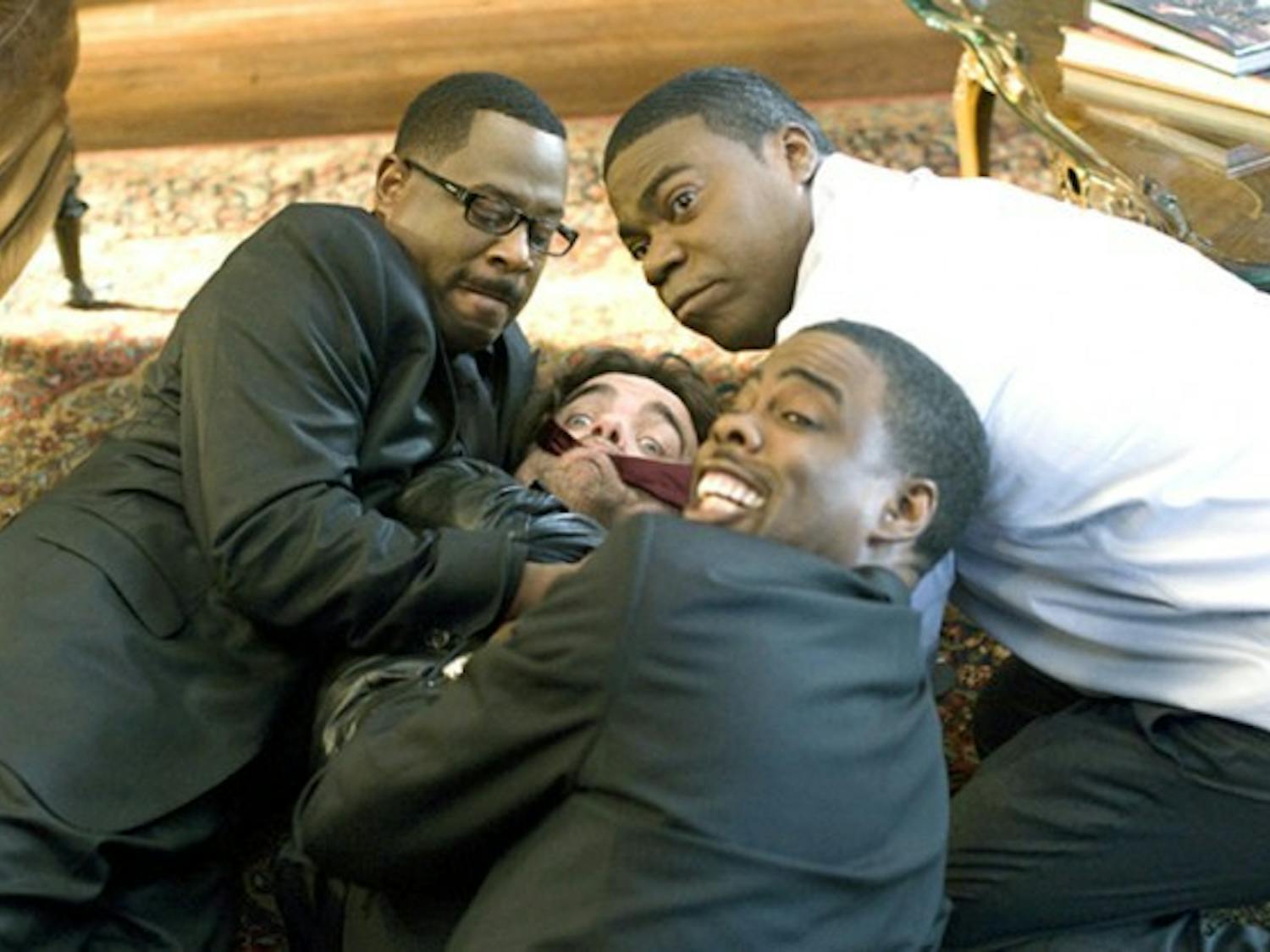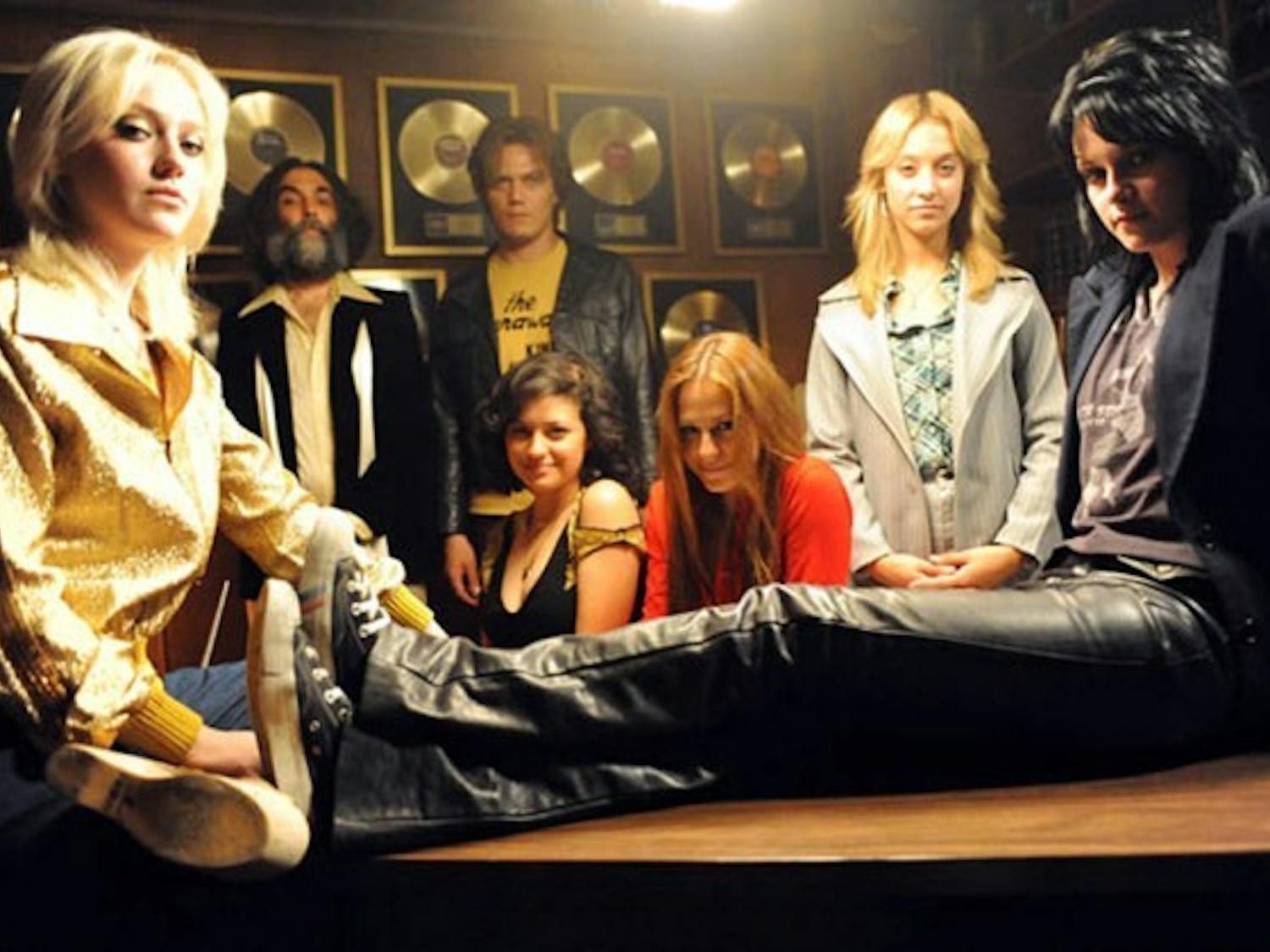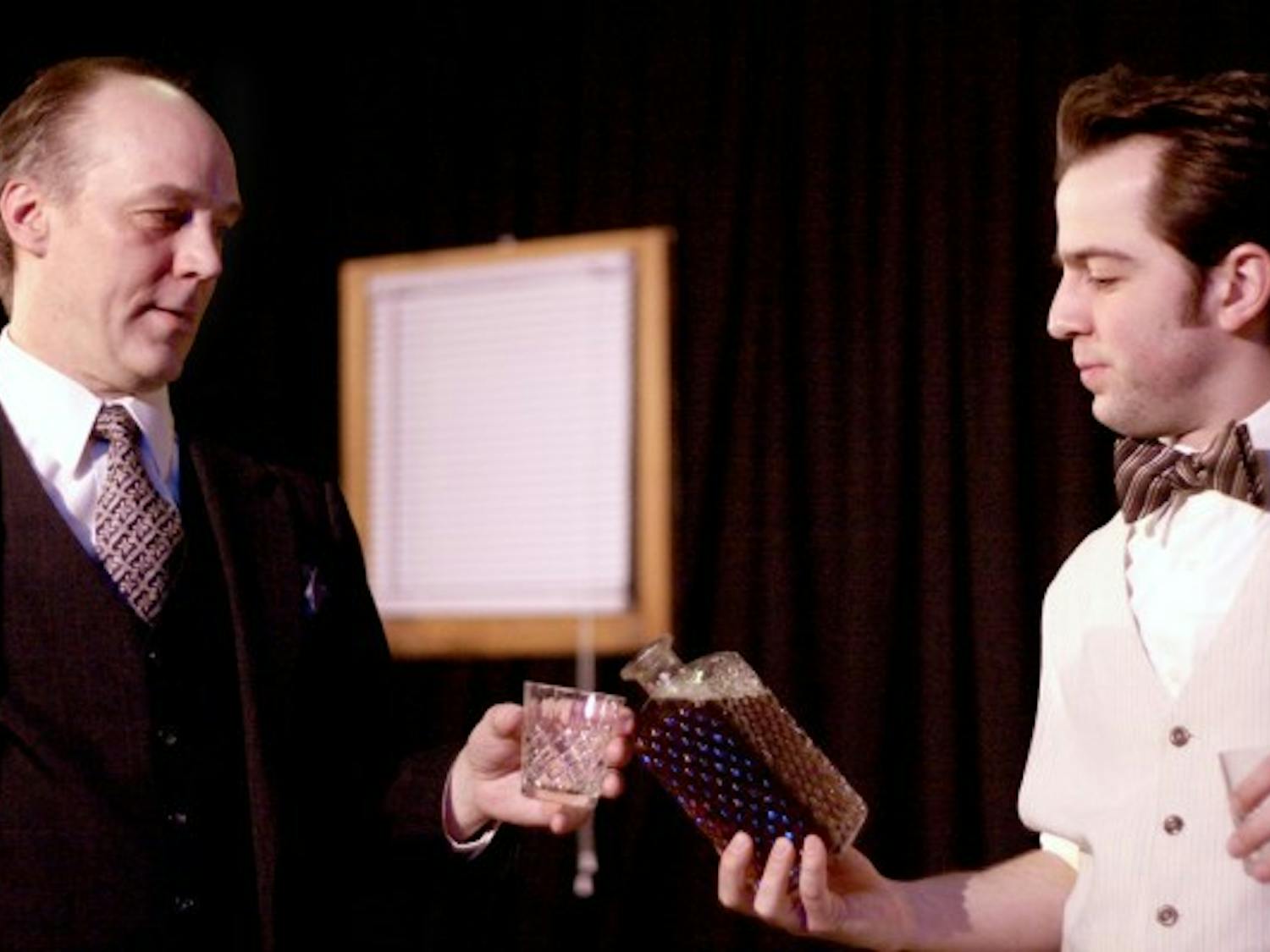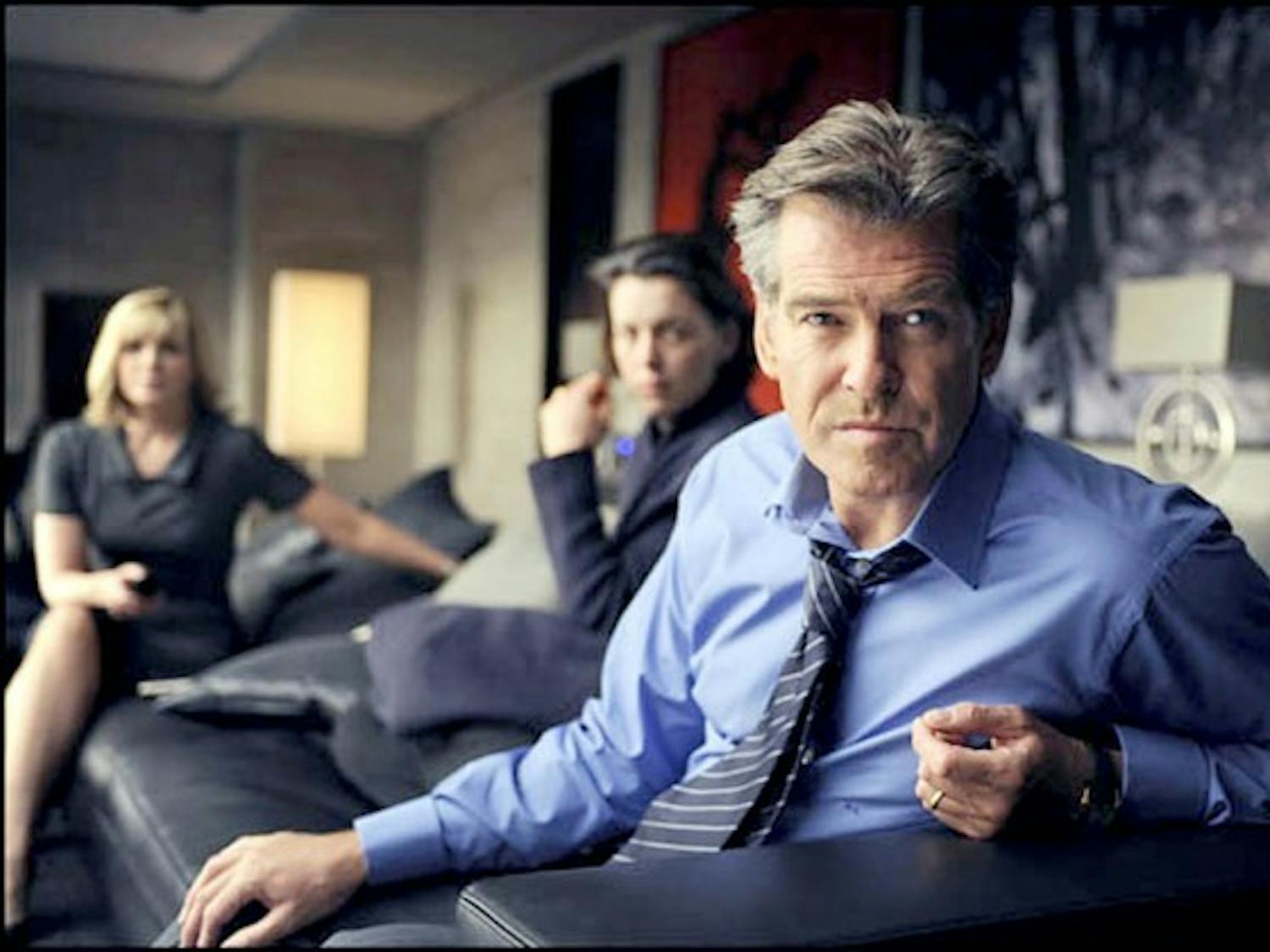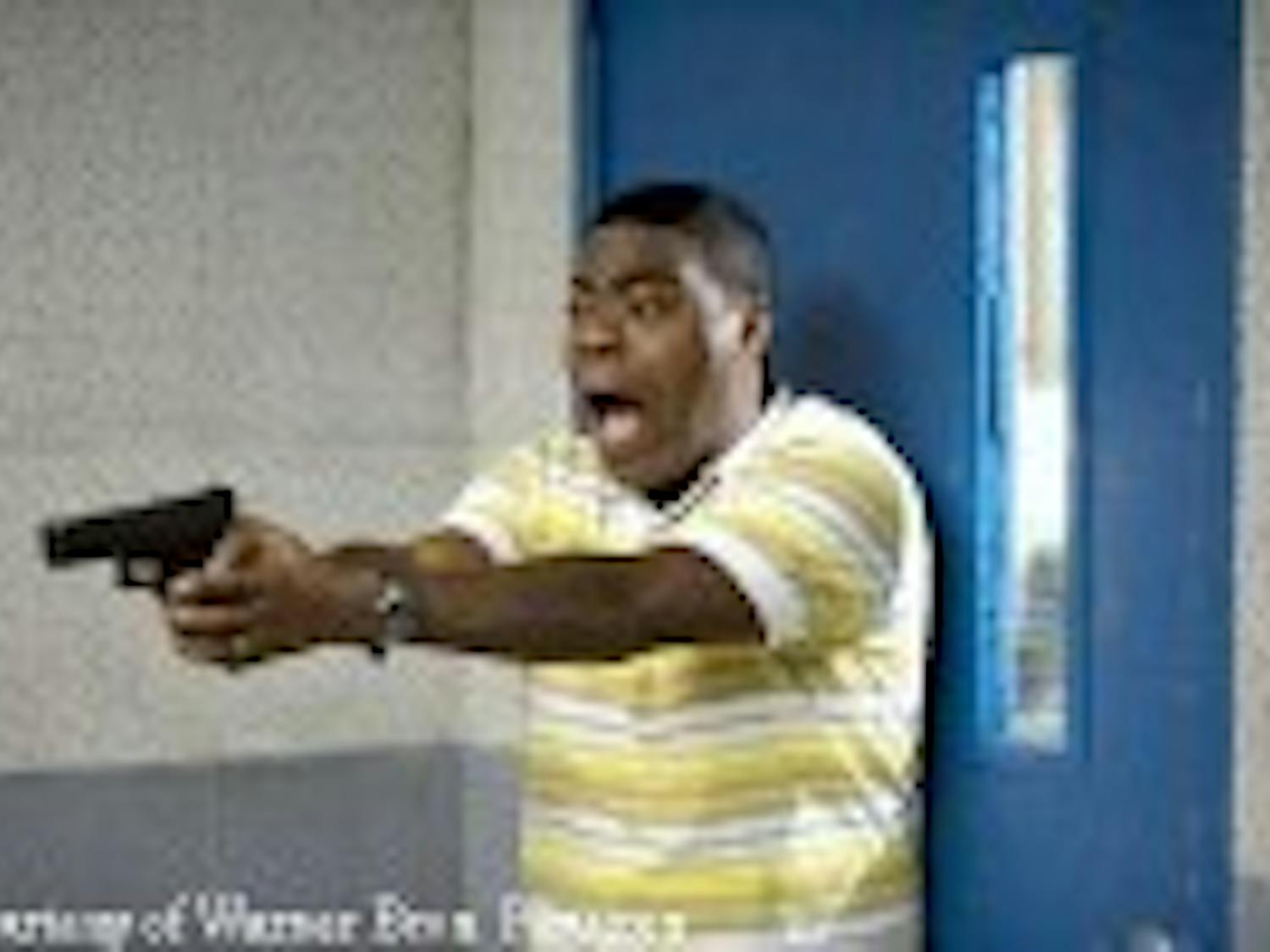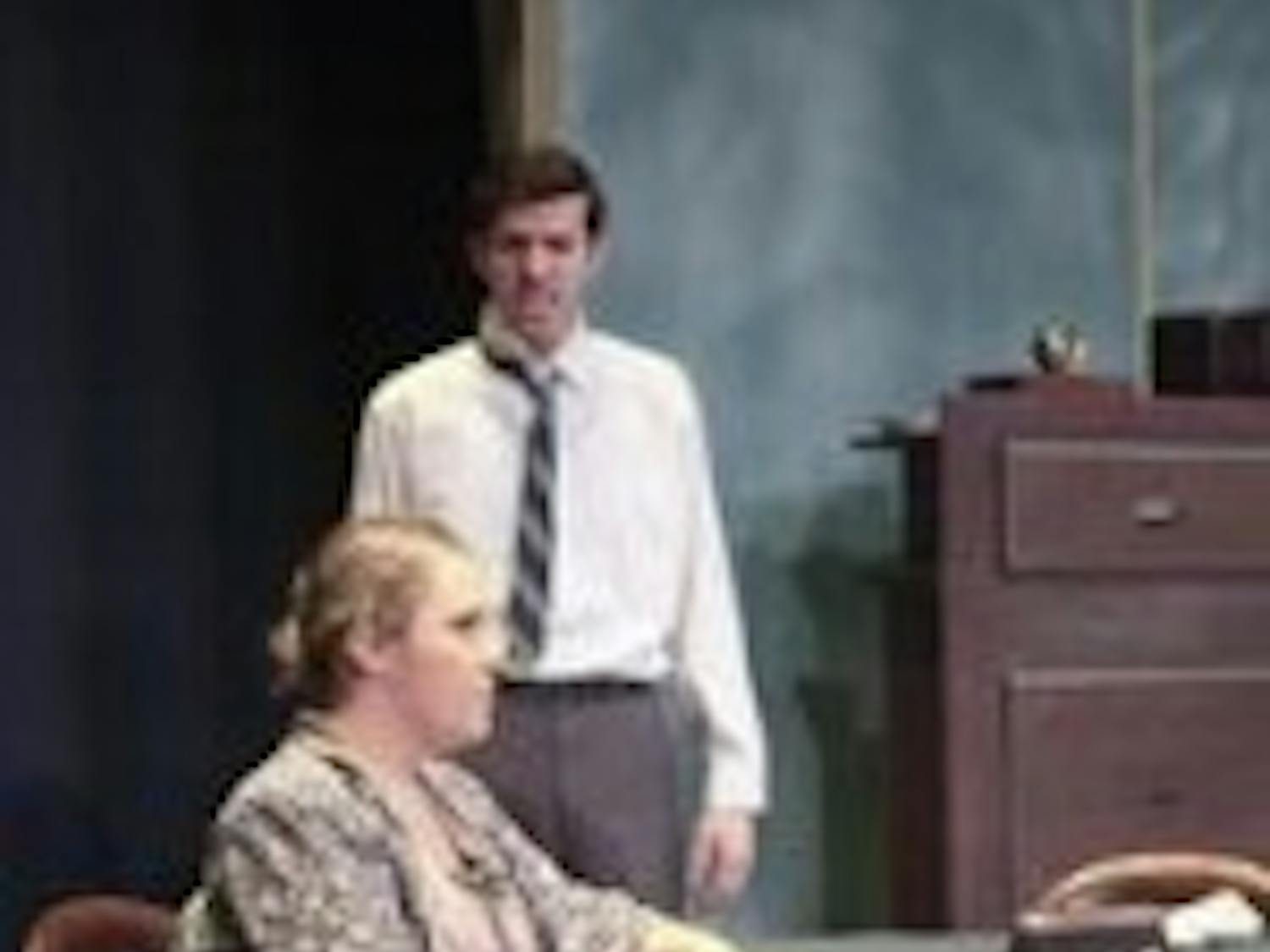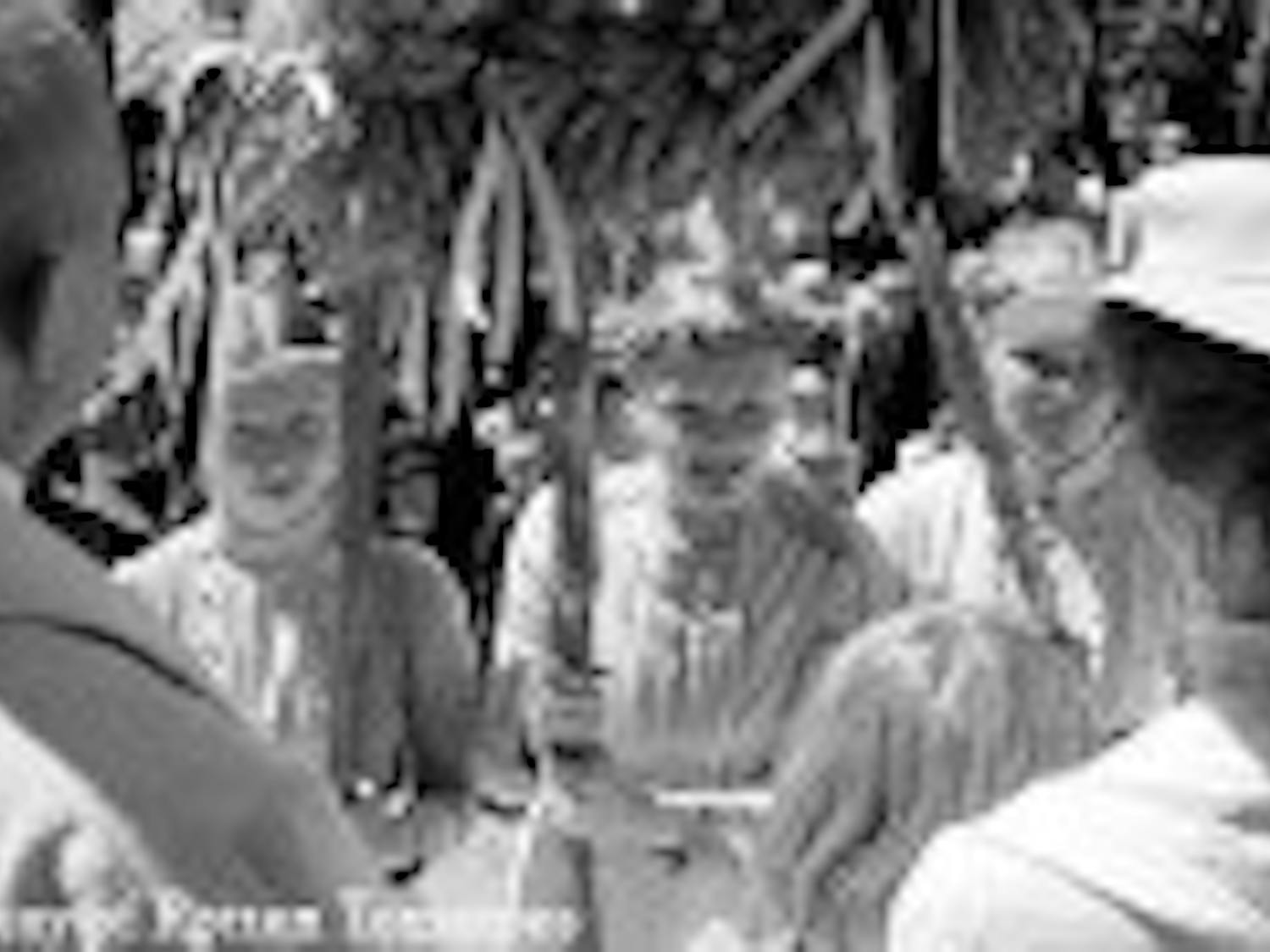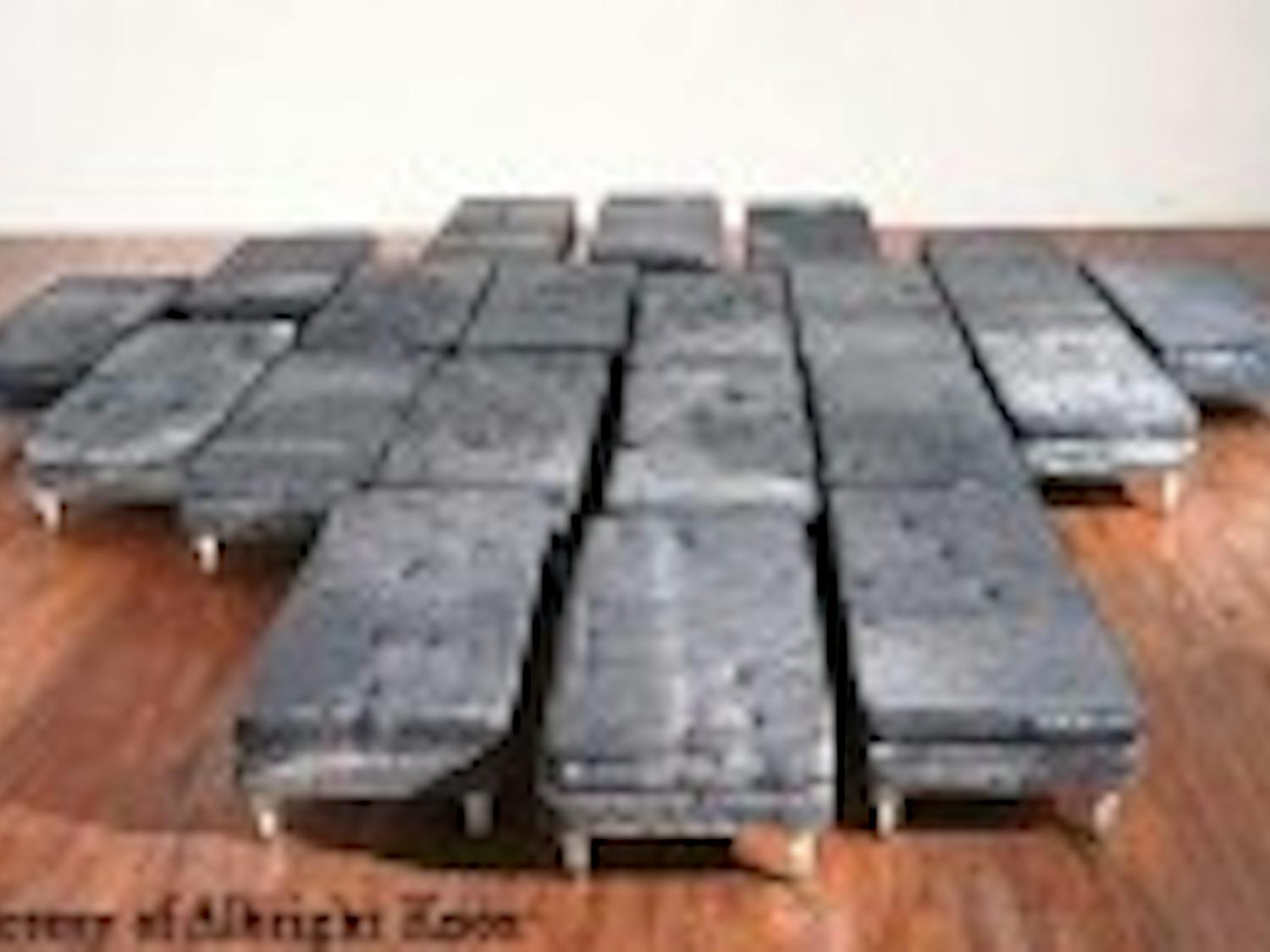JOSH Q. NEWMAN
Pondering the way we are
By JOSH Q. NEWMAN | Apr. 16, 2010The UB Theater Department's production of Thornton Wilder's Our Town last Wednesday was a glimpse into American life at the turn of the 20th century. There was one particular aspect that caught on-lookers' attention – questioning life.
Hot tubs for dummies
By JOSH Q. NEWMAN | Mar. 28, 2010Hot Tub Time Machine has reached the acme of cinema in that its aesthetic sublimity and biblical renditions have rendered a new age in which the existential and metaphysical property of human existence once pondered by magi and sage alike have now been extricated from its granitic, Gondwanaland sepulcher into the realm of a surrealist bazaar. Only kidding. But Hot Tub Time Machine is really sweet. The movie avoids any sort of message or heavy-handedness. As one can guess from the title, the film just tries to be stupid yet funny, and it is very successful in both. There are only a handful of time-travel movies out there and there are very few, if any, movies that focus on hot tubs. So Hot Tub Time Machine has the honor of being the first movie in cinematic history to join together two very different but nonetheless fascinating topics. The set-up is quite typical for a buddy comedy. Four men down on their luck are disillusioned by how their life has turned out at middle age. Adam (John Cusack, 2012), Nick (Craig Robinson, Father of Invention), and Lou (Rob Corddry, Rogues Gallery) have led, to put it lightly, unfulfilling lives. They wallow in their own self-pity and drown their problems away through booze and whining. There's also Jacob (Clark Duke, Sex Drive), Adam's passive 20-year-old nephew who lives in his basement and does nothing besides play videogames. After Lou tries to kill himself, the four decide to spend the weekend at a ski retreat. There they party in (unbeknownst to them) a time-bending hot tub, which, after a night of hard drinking – that may or may not have involved mascot sex – transports them to 1986. The rest of the movie is about the four trying to get back to the present, all the while reliving and/or trying to change the past. In a way, it's everyone's ultimate fantasy. Who wouldn't want to change something in the past? Or more importantly, who wouldn't want to bet against the Bills in 1991 and Al Gore in 2000 to make a ton of money? The four, however, have to be careful. One false move could result in the butterfly effect, which, if you haven't seen the horrific Ashton Kutcher movie, means that the entirety of the time-space continuum and life as they know it could completely change. As one of the guys puts it, they could make Hitler president. All the while, they must deal with the '80s. Granted, most young people who watch it may not get everything, but the movie does a good job of reminding the audience of the particulars and fads of an era when cellular phones weighed five pounds. Stunner shades, Jerry curls, Ronald Reagan, the incandescent clothing and Poison all make their respective appearances. It makes the audience glad that the '80s occurred, but happier that it's over. The movie isn't smart but it is rather over the top, rude and simply fun. What makes it work is that it doesn't overuse clichés. It simply uses them to their maximum effectiveness with hilarious results. The performances were funny as well. Cusack uses his typical charm and everyman demeanor to good use, while Robinson was cute as an unconfident giant who's there for his friends. The two to watch out for, though, are Duke and Corddry. Duke plays Jacob as a likeable loser who can still stand up for himself. He's like Michael Cera, except not boring. Corddry goes all out. He is loud, obnoxious and totally ridiculous – just like we expect him to be. The bald SOB is hilarious in every scene he's in, whether he's getting beat up by some ski buff or trying to take advantage of his knowledge of the future. There's also Chevy Chase (Presidential Reunion) as the mysterious hot tub mechanic who gives the four advice on how to get back to 2010. He doesn't nearly get as much screen time as he should. Though his character is practically worthless, Chase plays him as well as the script can provide. Hot Tub Time Machine is great fun and is good for a night of laughs. It may not be H.G. Wells's The Time Machine, but with a title like that, who cares? E-mail: arts@ubspectrum.com
Georgia railroad on my mind
By JOSH Q. NEWMAN | Mar. 23, 2010The American Repertory Theater's production of Red Clay last Friday at the Cabaret Theatre on Main Street was modest yet entertaining, showing once again that there is great potential in local theater. Playwright Matthew LaChiusa knows what he's doing. His play, which could be described as a mix between Tennessee Williams and the TV show Dallas, has witty dialogue, colorful characters and a decent plot. Welcome to the world of Southern Comfort. In 1982 Georgia, Danny Gibbons (John Kaczorowski), the young, insecure owner of Red Clay Railroads, and his right-hand man, William Kincaid (Peter Jaskowiak), are planning to make the railroad public. They seek the help of a New York investment firm that sends representative – and the boss's daughter – Ruby Lucas (Tara Kaczorowski) to evaluate the railroad. Everything seems fine on the surface, but of course, nothing is. The sinister Kincaid is secretly planning a scheme that would make him rich and leave Gibbons hanging. Aided by a disgusting private eye, Joe Hamilton (Christopher Standard), Kincaid plans to take over one of the most successful railroads in Atlanta by any means necessary. So this is how corporate takeovers are done in the South: through a lot of drinking, smoking, scheming and screwing. It's not much different than in the North, except that the South certainly has a better sense of humor about it. The play is pleasurable to watch. If you're into Tennessee Williams, Eugene O'Neil, Tony Gilroy, alcohol, or Southern accents, then you're in for a treat. However, Red Clay brings nothing new to the table. The play isn't a soap opera, but it does venture into the melodramatic. The play's realism is sometimes compromised by its old-fashioned need for dramatic flair. The characters don't develop much, and the plot has been seen many times before. LaChiusa's portrayal of the South is considerably fair. It's easy and quite typical for Northerners to poke fun at the South, yet LaChiusa has none of that. He has a great understanding of Southern culture – its mannerisms, sense of history and pride, as well as its considerable dedication to humor. There is, of course, the tackiness, shown most clearly by Kincaid's bimbo secretary Clara Hood (Andrea Andolina) and Gibbons's friend Billy Ray Gunn (Patrick Cameron). Then there are the scenes set in a local bar, which is more of a product of the '70s and '80s than of Robert E. Lee. The play shows great attention to detail. Director Drew McCabe does what he can to establish an accurate milieu. The clothes, the ample liquor, the Confederate flags, the slicked-back hair and even the portraits of Jimmy Carter and Ronald Reagan give the impression that we are in post-Watergate southern America. LaChiusa's dialogue is often witty and driven. It propels the action forward and gives the characters just enough room to breathe. Dialogue often defines theater and the play is good enough to make it enjoyable. What Red Clay has in style, though, is hindered somewhat in substance. The plot includes the obvious turns: Gibbons and Lucas having an affair, Kincaid fooling every businessman he sees, Hamilton and Kincaid loading their bodies with liquor, and a takeover scheme that is easily understood. Crooked corporate dealings are nothing new, especially nowadays, so it would have been nice to see the play do something more with it, considering it seems to set out for something higher. Indeed, there are other parts of the play that badly want to be noticed. There's a sing-off in Act II that's funny, but nonetheless uncomfortable to watch. Gibbons and Lucas's relationship – in fact, Lucas's character in general – is very prominent, yet is too robotic to be realistic. And Act III spirals so out of control that it's like watching someone ride an automated bull. Red Clay is still a fine work nonetheless. It's never boring and has a style of its own that engages the audience. The play is simply a dramatic shot wrapped in a vernacular blanket. The play also shows that Buffalo's theater life has a lot of energy. LaChiusa's pen and McCabe's direction worked very well together. Overall, Red Clay is an exercise in dramatic turnarounds and Southern style, and it is done well – that is to say, Buffalo style. The play can be seen in The Cabaret Theater at 672 Main Street through this Saturday. E-mail: arts@ubspectrum.com
A jolly good night
By JOSH Q. NEWMAN | Feb. 26, 2010The UB Theater Department's production of Harold Pinter's 1959 play A Night Out was, as the program notes state, an 'exercise in realism.' It examines just how real things can get. Pinter, the iconoclastic, incredibly liberal Nobel laureate, creates an environment in which everything is not as it seems. There's an underbelly to Pinter's writing that creates a tension that would otherwise come across as cliché. Pinter's London is a playground for those in their 20s, but not everyone is up for it. The play's protagonist, Albert Stokes, finds out the hard way. Stokes (Ryan Cupello) is a typical young man in his late 20s who lives with his mother (Amanda McDowall), an overbearing, abusive widow who suffocates the young man's chances of living for himself. Viewers immediately find the two fighting each other to the depths of hell – all for a missing tie. Stokes wants to go out that night to his boss's party. Everyone will be there, he says. He has to go. His mother does everything she can to guilt Stokes into not leaving, but to no avail. Her powers in shaming can only go so far. When Stokes goes to the party, he encounters his brash coworkers, including three very pretty girls and his office arch-nemesis, Gidney (Shawn Smith). His shyness proves to be his weakness, and after an incident provoked by another coworker, he is tacitly expelled. A nasty fight with his mother and an encounter with a neurotic girl ensue, escalating the tension even further as Stokes slowly but surely becomes more confident. The production itself was performed expertly. Cupello played Stokes with an infuriating depression that rubbed off on all the other characters. McDowall was also a standout, incredibly annoying and totally convincing as a manipulative British nightmare. The other characters, particularly the unnamed girl (Genevieve Lerner), keep intact a gloomy milieu. None of Stokes's friends seem to like him, and the girl is so neurotic that she might just drive Stokes away from the opposite sex all together. The minimalist sets were accurate as well. They had just enough to convince the audience that they were witnessing scenes from London in 1959. The skinny ties, bourbon and, of course, cigarettes looked like they came straight from the set of Mad Men. However, despite the production's best attempts to bring Pinter's ideas alive, the play itself is seriously flawed. It might be taboo to criticize Pinter, who is considered one of the world's best playwrights of the past 50 years, but his play confuses the matters of life and death with trivial social errors. Everything boils down to Stokes's relationships with women. Pinter writes Stokes as if he knows absolutely nothing about women, yet Pinter seems to think that he knows everything about women himself. Stokes may be shy, but that doesn't mean he can't get along with girls. He has probably had enough experience with his mother to know that women – in men's eyes – can be somewhat of a mystery. Pinter's female characters, with the exception of the mother, don't come across as likable. It is a mystery why Stokes would want a relationship with any of these women. The author has stated that his plays focus on a man's entrance into the real world. In A Night Out, at least, the real world doesn't exist. It is replaced by jerks that argue over football and cheese sandwiches. The play itself is set with a one-kilometer radius, making London seem like a collection of old record players and gas-powered fireplaces. If Pinter was trying to predict the tumultuous '60s, he did so with a considerable amount of condescension. Stokes tries to break free, yet in real life that usually takes years, not one night. Overall, Pinter's take on a young man's maturity is sensationalist. Stokes' trip to maturity works better as a horror story rather than a drama. He shares much with Hitchcock's psychopathic shut-in, Norman Bates. The production did the best it could have with the material. The acting and resulting characterization were excellent, but like Stokes, the audience may not be up for it. A Night Out can be seen at the CFA's black box theater until Feb. 28. E-mail: arts@ubspectrum.com
The black and White Ribbon
By JOSH Q. NEWMAN | Feb. 26, 2010Living in a black-and-white world is a terrible burden, especially for those who know it is black and white. The German film The White Ribbon, winner of the 2009 Golden Palm at the Cannes Film Festival, is a bleak moral painting set in a provincial German village on the eve of World War I. Filmed in black and white, the movie examines a broad array of characters who harbor suspicions and secrets toward one other. The narrator claims that the story could possibly explain the horrific events in the following 30 years of Germany's history. On a broader level, it shows what happens when repression and fear take over a human heart and what a group of afflicted people can do to each other. The movie follows an unnamed schoolteacher (Christian Friedel) in the small village of Eichwald. He narrates the movie as a much older man, describing, or at least postulating, events in the form of distant memories. The narrator becomes involved in a 15-month courtship with Eva (Leonie Benesch, Beautiful Bitch), a nanny for the local baron. Over the course of their relationship – the only romantic relationship that exists in the movie – strange and violent things happen. First, the local doctor (Rainer Bock, Inglourious Basterds) is injured when he trips over a hidden wire while horseback riding. A farmer's wife dies falling through rotten floorboards. The baron's son is found beaten and a midwife's mentally challenged son is found tortured. The townspeople don't know what to make of this. As panic ensues, the movie exposes some of the dark secrets of prominent citizens. The pastor (Burghart Klaussner, Alter und Schönheit), a stoic puritanical type, administers brutal punishments to his children. The doctor has an affair with the midwife and sexually abuses his daughter. The baron's wife abandons the village and returns months later, absolutely furious. The schoolteacher develops his suspicions, nearly coming to the point of acting on them. The White Ribbon has the mood of an Ingmar Bergman movie: bleak, cold, obsessive and unsmiling. There is not a single shot in the movie that doesn't contain elements of horror. While it is not terribly graphic, it shows events with such honesty that it makes one shudder. According to the esteemed writer and director Michael Haneke (Funny Games), the movie is about 'the origin of every type of terrorism, be it of political or religious nature.' His claim is not overtly obvious – at least to American viewers. Our view of terrorism is that of blown-up buildings, hijacked planes, suicide bombers, and AK-47s. Yet the film displays that there is a more subtle form of terrorism that is not unique to any particular race or nation – the terror of the heart. When the pastor forces two of his children to wear a white ribbon to symbolize the purity they have broken or when the doctor tells his mistress that he wishes her dead, the spirit crumbles and the holocaust of decency and charity begins. It is the children in the movie who suffer the most. All of the strange events either happen to children or directly affect them. Looking at their austere faces is enough to make the viewer understand where they come from, a belligerent drilling of purity in an environment in which sin is hidden or beaten out of them. The schoolteacher, one of the only truly decent people in the town, sympathizes with the children. But he also suspects some of them, especially the pastor's daughter Klara (Maria-Victoria Dragus, Du Bist Nicht Allein), whose behavior is the most brash of them all. Ultimately, though, the movie attempts no explanation of what happened. When the war starts, the denizens forget the crimes and move on. Even the schoolteacher seems more or less detached from what happened, leaving the town for good. The White Ribbon is an excellent examination of moral terror. Many movies try to depict the human condition, but few achieve this movie's vision and narrative scope. Clocking in at two-and-a-half hours, the movie is long and depressing. But then again, so is life. E-mail: arts@ubspectrum.com
For whom the bed tolls
By JOSH Q. NEWMAN | Feb. 24, 2010On Friday, the Albright-Knox Art Gallery premiered an exhibition on the works of Argentine artist Guillermo Kuitca. Spanning 28 years, Kuitca's career showcases an acute sense of the great philosophical and physical action that is art. 'Kuitca likes to explore the dynamics of space,' said Douglas Dreishpoon, chief curator at the Albright-Knox. 'He finds space an active component of our lives and something that we take for granted.' The exhibit, roughly three-and-a-half years in the making, was painstakingly organized by Dreishpoon. It contains more than 50 paintings and 25 drawings, and has works that have been imported from all over the world, including London, Puerto Rico, Chicago, Buenos Aires, Barcelona and New York. Maria Morreale, director of public relations and marketing, is ecstatic about the new exhibit. 'We are quite lucky to have this,' said Morreale. 'We deeply appreciate Kuitca's work and have been adamant in bringing them here.' Kuitca, born in Argentina in 1961, has been drawing and painting since he was six. He had his first gallery exhibition when he was 13 years old and became an internationally known artist in his early twenties. His works have been displayed in prestigious art galleries such as the Museum of Modern Art, the Metropolitan Museum of Art, the Smithsonian Institution and the Tate in Great Britain. Kuitca's artwork focuses on public and private interactions, emotional drama, political and social systems, and the exploration of space. Morreale describes his work as 'visual poetry.' 'He likes to use metaphoric and symbolic images,' Morreale said. 'There's a message of human interaction and dislocation in his work.' Kuitca, who was present at the opening, was amiable and very straightforward when discussing his work. He describes his approach to art as a point-of-view oriented process. 'Without the point of view, you can't make art,' Kuitca said. 'My point of view is hard to describe. I would say that it's a physical reaction. Art is essentially a physical action.' He considers art to be more physical than cerebral. He brushed aside idealism when asked about the philosophy of art, describing it as a 'fake equation.' However, Kuitca still believes that emotional contradictions are what his work is about. 'I like to shift the scale,' Kuitca said. 'There are active emotions, opposites, and contradictions present in my work.' In terms of space, he differentiates between the presence and absence of matter. The contrast of the two fuels his ideas, particularly his depictions of humans. He has not drawn human figures for nearly 20 years, claiming that he is more interested in the remnants that humans leave. Indeed, the two most prominent objects in his works are beds and maps. 'The bed contains an incredible amount of the human condition,' Kuitca said. 'Some of the most important human experiences occur on the bed, including life, death, dreams, lovemaking and sickness. It is simple, but rich with experience.' Not only does he draw and paint beds, he uses them as materials. At least five of his works, including 'Heaven' (1992), have used bed mattresses as the surface material (which he claims are not much different than canvases). In addition to mattresses and canvases, Kuitca also likes paper. He uses mixed media such as graphite and pastel in his work. Paper, for him, has a certain vitality not found in anything else. 'Paper always has charisma,' he said. 'It is much different than canvas and I like to explore ways on how to make paper drawings.' The gallery also displays works that portray conveyor belts, architecture, literature, music, politics (particularly the politics of the Argentine military dictatorship in the early 1980s) and society. Kuitca can turn images such as beds on fire and overturned chairs into abstract works of art. For that, the Albright-Knox is astounded and grateful to have the exhibit. 'His works contain metaphors for a lot of things,' said Dreishpoon. 'His works are poignant and pregnant with meaning.' The exhibition will be on view until May 30. Visit www.albrightknox.org for more information. E-mail: arts@ubspectrum.com

